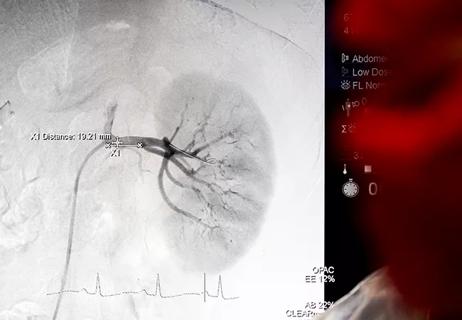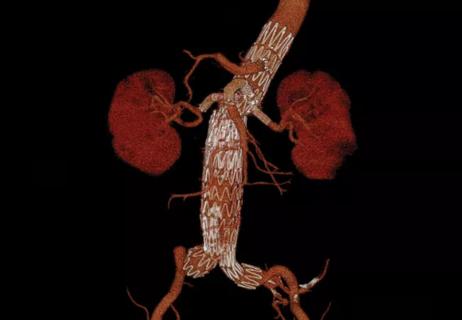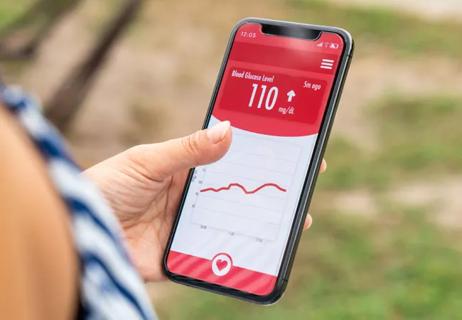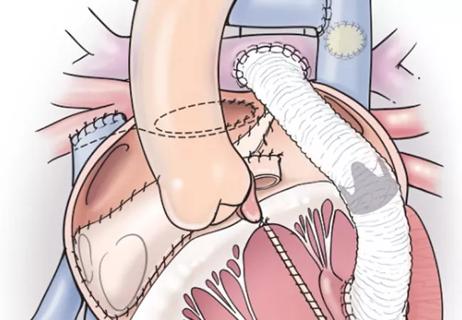New study yields pre-pandemic insights for the post-pandemic landscape

When Cleveland Clinic researchers conducted their newly published study, “Use of Virtual Visits for the Care of the Arrhythmia Patient,” in late 2018 and the first half of 2019, they had no idea just how pertinent its findings would prove when published online in Heart Rhythm in May 2020.
Cleveland Clinic is a non-profit academic medical center. Advertising on our site helps support our mission. We do not endorse non-Cleveland Clinic products or services. Policy
The study is one of the first assessments of patient and physician experience with virtual visits in cardiac electrophysiology, yet it was completed soon before the COVID-19 pandemic shifted virtually every medical specialty to embrace telemedicine at a speed and scale previously unimagined. As a result, the study was published into a telemedicine landscape that has changed in important ways, but its findings spotlight some key considerations that are more valuable than ever.
“This study informed us about the value of virtual visits in providing care for our arrhythmia patients, but frankly we never thought of pandemic preparedness as one of the perks,” says the study’s senior author, Khaldoun Tarakji, MD, MPH, Associate Section Head of Cardiac Electrophysiology at Cleveland Clinic. “Our investigation identified many lessons that have become very apparent now during the pandemic. You need to have a platform that’s reliable, secure and easy to use for both physician and patient. You need to support the platform with the right tools, including the ability to get data collected by patients remotely, and you really need to engage everybody in your institution to make telemedicine work.”
Cleveland Clinic has been offering virtual visits to established patients with arrhythmia since 2016. “Electrophysiology is one of the specialties best equipped to offer virtual care since we’ve been doing it for a while and have the tools to accomplish it,” says Dr. Tarakji, a nationally recognized expert in electrophysiology telemedicine.
“My out-of-state patients who’ve had an ablation used to have to come back after six months or a year for a single ECG,” Dr. Tarakji notes. “Now they don’t have to travel. They record their data at home using their smart devices and I review it. That’s how you build a virtual visit program that’s not just a glorified phone conversation with video but is much more meaningful because it’s supported by data.”
He and his colleagues tapped that experience for their new study, a prospective survey of 100 consecutive established electrophysiology patients who participated in outpatient virtual visits between December 2018 and July 2019. The survey asked patients about their experience with the visit. For each virtual encounter, the physician who performed the visit was also invited to take part in a separate physician survey about their experience.
Cleveland Clinic’s secure virtual visit platform was used to conduct the visits in real time via smartphone, tablet or computer. Using various interfaces the Cleveland Clinic team has built, the electrophysiologist reviewed remote monitoring arrhythmia data that were transmitted prior to the visit and uploaded to the electronic medical record from an ECG, ambulatory heart rhythm monitor, smartphone ECG recorder or cardiac implantable electronic device.
Among the 64 patients who completed the survey, very large majorities rated their experiences as excellent or very good in terms of scheduling the virtual visit (87%), seeing their physician of choice (100%), transmitting arrhythmia data for review (88%), their physician’s ability to communicate (98%), having a chance to ask all their questions (98%), the level of care they received (98%) and overall satisfaction (98%).
Fourteen electrophysiologists completed surveys across a total of 91 virtual visits, giving high levels of excellent or very good ratings for ability to communicate (92%), ability to access monitoring data (95%) and overall satisfaction (98%).
When asked about their preference for the next visit, 59% of patients and 68% of physicians preferred a virtual visit, while 19% and 8%, respectively, preferred an in-office visit. The rest had no preference or said it would depend on the specific indication for the visit.
The one area of the survey where satisfaction levels with virtual visits were notably lower was cost, with only 68% of patients deeming them affordable or very affordable.
This doesn’t surprise Dr. Tarakji. “One of the biggest hurdles for wider adoption of virtual visits had been the lack of clear regulations and reimbursement models,” he says. “Policies from insurance companies weren’t clear, and sometimes patients had to pay out of pocket.”
He notes that this has changed substantially as a result of the pandemic, with the Centers for Medicare & Medicaid Services allowing physician reimbursement for telehealth services at the same rate as in-person visits for all diagnoses. Other emergency federal rule changes have allowed use of telehealth for new patients and lifted restrictions regarding the physical locations of patients and physicians, including provision of virtual visits across state lines.
Dr. Tarakji says it’s not clear what will happen with the emergency federal rules as pandemic lockdowns ease, but he doesn’t envision a return to the status quo. “For many patients, virtual visits are not the right choice and the standard will always be an in-person visit with proper exam and the ability to conduct needed tests,” he says. “However, for some patients, virtual visits will become an expectation.”
He and his co-authors intentionally left out any mention of COVID-19 and its immediate aftermath in their new study report. “This study was a unique opportunity to assess both patient and physician feedback about virtual visits that can never be duplicated without being biased by the pandemic,” Dr. Tarakji observes.
“While Cleveland Clinic recognized the many advantages of virtual visits years ago,” adds his co-author Oussama Wazni, MD, Section Head of Cardiac Electrophysiology, “we never anticipated their immense utility during a pandemic. But now that COVID-19 has made telemedicine an expectation, our job is not just to make sure we do it, but to offer it in the best way in order to provide patients the best care.”

General principles for use of the long-awaited new therapy approach

ACC panel issues call to action to achieve CV health equity in an underserved population

Get a glimpse of the facilities and technologies used by the nation’s top-ranked heart program

EVAR pioneer Dr. Juan Parodi surveys the past and future of a revolutionary procedure

Latest systems combine continuous glucose monitoring with automatic basal insulin delivery

Common congenital lesion is not always benign

Series of five patients successfully treated with ‘ventricular switch’

Results also show eagerness to learn more